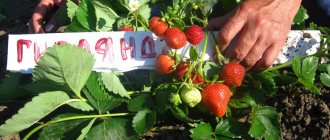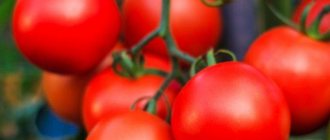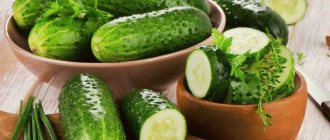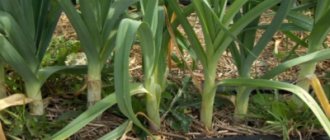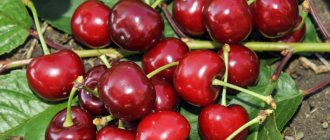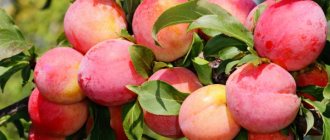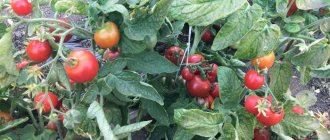Which varieties to choose for the Moscow region
The State Register of strawberry varieties recommended for the Moscow region includes more than 30 varieties of delicious berries. The best of them are discussed in the table.
| Variety | Frost resistance | Productivity per bush / weight of 1 berry | Taste/Disease Resistance | Number of mustaches |
| Kimberly | Up to -15 °C | Up to 2 kg / 25-50 g | Sweet and sour/High | Few |
| Cardinal | Up to -16 °C | Up to 1 kg / 20-50 g | Sweet and sour/ Medium | A lot of |
| Alba | Up to -20 °C | Up to 1.2 kg / 25-30 g | Dessert/High | Few |
| Vima Zanta | Up to -22 °C | 800 g / 25-50 g | Dessert/Medium | A lot of |
| Nightingale | Up to -30 °C | 0.5-1 kg / 25-50 g | Sweet and sour/Medium | A lot of |
| Marmalade | Up to -30 °C | Up to 1.2 kg / 20-40 g | Sweet and sour/Low | A lot of |
| Albion | Up to -10 °C | Up to 2 kg / 35 g | Dessert/High | Few |
| Monterey | Up to -10 °C | 1.5 kg / 30 g | Dessert/High | Moderate |
| Queen Elizabeth | Up to -25 °C | 2 kg / 40-100 g | Dessert/High | Few |
| Tago | Up to -20 °C | 1 kg / 20-30 g | Sweet/Medium | A lot of |
| Malvina | Up to -19 °C | Up to 1 kg / 40 g | Dessert/High | A lot of |
| Holiday | Up to -15 °C | 900 g / 40 g | Sweet/Low | Few |
| Bohemia | Up to -20 °C | 1 kg / 50 g | Dessert/High | Average |
| Gigantella Maxim | Up to -10 °C | Up to 2 kg / 50-120 g | Sweet-sour/Medium | A lot of |
| Moscow Yubileinaya | Up to -16 °C | 1 kg / 40-120 g | Sweet-sour/High | A lot of |
Strawberries with long and short daylight hours, as well as “neutrals,” are suitable for growing in the Moscow region.
Late
To have strawberry fruits on the table in mid-summer, you can plant late varieties on the plot. We will consider in more detail the best varieties of remontant strawberries for the Moscow region for open cultivation below.
Malvina
It was developed by scientists from Germany. The size of the bushes reaches half a meter. They produce many large dark green leaves with a glossy surface. The flowers are large, bisexual. Small flower stalks are located under the leaf blade, so the fruits will not bake in the sun.
The berries are wide-conical in shape. Often there are options that have a double shape. At the stage of technical maturity, the skin is scarlet, with a slight glossy sheen. When the fruits are fully ripe, they acquire a dark cherry hue. There are small yellow achenes on the surface of the skin. When cut, the flesh is red, dense, and has a lot of juice. The aroma has medium intensity.
Holiday
The late Holiday variety is suitable for growing in the Moscow region. Compact bushes grow strongly and are covered with large leaves. The leaf blades are light green in color and the surface is slightly pubescent. The flower stalks are massive and are hidden under the leaves.
The berries are small, cone-shaped. The fruits that ripen first are ridge-shaped. The skin is scarlet and shiny. There are many yellow achenes on the outside. The pulp is characterized by an orange-scarlet hue.
The Holiday variety is suitable for transportation and long-term storage.
Chamora Turusi
The hybrid bushes are massive and voluminous. Their height is about 50 cm. The first large berries ripen in July. The crop bears fruit for about a month. The weight can reach 80 cm. During the season, about 2-2.5 kg of berries are obtained from one bush.
Many thin tendrils form on the bushes of the Chamora Turusi variety. If they are not removed, the area will thicken and the berries will begin to shrink. This can also provoke the formation of gray rot. This variety is winter-hardy and does not require shelter for the winter.
Now you know the best remontant strawberry varieties for the Moscow region. You can plant varieties with different ripening rates in your area so you can enjoy the berries from May to August.
You will learn about other varieties of strawberries from the video.
Zoned varieties of strawberries
The best regionalized strawberry varieties for the Moscow region begin to bear fruit in early summer, rarely get sick, and do not require special care. They are perfectly adapted to the difficult conditions of central Russia.
Kimberly
This early variety, bred by Dutch breeders, has long been loved by gardeners in the Moscow region. A plant with powerful but compact stems. The berries begin to ripen in May. Fruiting lasts about 20 days. The variety is cold-resistant, has immunity to verticillium wilt and powdery mildew.
"Kimberly" does not tolerate drought well and needs frequent watering. Weeding and loosening are mandatory maintenance procedures. Responds well to timely subcortex supplementation with minerals. Resistance to pests is weak.
Cardinal
This early variety was bred by American breeders. Strawberries are fully adapted to the climatic conditions of the Moscow region. The bushes are medium spreading, powerful and tall with many tendrils. Unrooted rosettes can produce a second harvest.
Caring for the plant is simple - just pull up the weeds and loosen the soil in a timely manner. "Cardinal" is a moisture-loving variety. In the absence of rain, it is watered every other day. Fertilizing is carried out three times a season with complex fertilizers.
Cardinal has immunity to fungal diseases, but resistance to powdery mildew is low.
Alba
One of the best strawberry varieties for the Moscow region. The guest from Italy tolerates the cold well, but requires shelter in snowless winters. The bushes are powerful, up to 35 cm in height. The fruits are cone-shaped and large. The harvest is harvested in May. "Alba" has good transportability.
The variety has high immunity to powdery mildew, brown spot, and black rot. Slightly susceptible to anthracosis and white rot.
For high yields, Alba requires good care. Weeding and loosening are standard procedures. The variety can withstand short-term drought, but is still moisture-loving and with a lack of moisture, it sharply reduces yield.
Vima Zanta
Mid-early variety of Dutch origin. Grows well in the climate of the Moscow region. The bushes are erect, medium-sized, powerful. The peculiarity of the variety is concave leaves that curl into a “boat”.
Fruiting begins in June and lasts 3 weeks. The core of the berries is hollow, so Vima Zanta is not suitable for commercial purposes. It is not stored and does not tolerate transportation well.
In addition to standard weeding and loosening, strawberries of the Vima Zanta variety need to be thinned. Even with slight thickening of the bushes, the yield decreases and the fruits become smaller. The mustache is trimmed at least 3 times per season.
Nightingale
A mid-season variety bred by domestic breeders specifically for the Central region and the Moscow region. The bush is powerful, lush, tall, but at the same time compact, with a large number of peduncles.
Friendly fruiting begins in June. The fruits of the first harvest are large, then become smaller. The yield increases by 2-3 years of plant life. Often the berries have a cavity inside, so they are not suitable for long-term storage.
Strawberry care is standard - weeding, loosening, mulching. Water the Nightingale as needed. Overmoistening has a detrimental effect on the quality of the berries - they become watery and wrinkle when picked.
The variety is frost-resistant and does not require additional shelter even in snowless winters.
Marmalade
Italian by origin, “Marmelada” is considered one of the best varieties of garden strawberries for the Moscow region. A plant with a compact but powerful bush and large dark green leaves bears fruit from the first days of June. Short-day, mid-early variety.
Rainy weather and waterlogging do not have the best effect on the quality of the crop. The berries do not have time to gain sugar, become watery, and the plant itself suffers from fungal diseases.
Garden strawberries “Marmelada” have shown themselves to be a frost-resistant variety. In snowless winters, the plant can withstand temperatures down to -15°C; at lower temperatures, shelter will be needed.
Climate influence on strawberries
In the conditions of central Russia, which includes the Moscow region, it is important to choose varieties that are characterized by fairly high frost resistance and at the same time withstand relatively dry summer conditions. Although it is the weather conditions of the Moscow region in the summer that are almost ideal for the development of strawberries: warm, but not hot days, with sufficient rainfall.
A fairly large number of sunny days give the opportunity for sweet berries to form.
Attention! The big disadvantage is the likelihood of frosts at the end of May and, conversely, in early autumn.
Therefore, judging by the reviews of many gardeners, ultra early varieties of garden strawberries are not very suitable for the Moscow region. There is a high probability that their flowering may be affected by frost. In this case, you can completely forget about the harvest. It is also not very productive to grow many remontant varieties in this region, since their second and third waves of fruiting may completely disappear due to the same frosts.
There is still a way out of such situations: you can install arcs over the strawberry plantings and cover them in spring and autumn with film or non-woven material during the period of night frosts.
Remontant varieties of strawberries
Remontant strawberries produce crops from spring to autumn, and some varieties in the Moscow region bear fruit until frost.
Albion
The daylight-neutral variety was bred by American specialists. It showed itself excellently on private plots of the Moscow region. The bush is powerful, medium in size. Fruiting begins at the end of May and ends with the first frost. Fruit ripening occurs in waves.
Over 10 years of growing the Albion variety, a certain agricultural technology scheme has developed that helps improve the quality of the crop. Water strawberries often, but in moderation. High humidity causes rotting of the root system. After irrigation, the soil is loosened and weeds are removed. Complex mineral preparations containing iron are used for fertilizer. During the flowering period, foliar feeding is carried out.
For the winter, “Albion” is covered with spruce branches, straw or agrofibre.
Monterey
"Monterey" comes from America. Despite this, strawberries grow and bear fruit well in the conditions of the Moscow region. The best harvests are obtained from bushes planted in a greenhouse. But even in open ground, Monterey shows decent results.
Powerful bushes are resistant to almost all strawberry diseases, except powdery mildew. Fruiting lasts from early summer until October, occurring in waves. The berries are large, and the fruits of subsequent harvests become larger.
For a good harvest, Monterey is watered abundantly in dry weather. It is best to use a drip irrigation system. With a lack of moisture, the berries turn red before they have time to ripen. That's why they lose their taste.
Queen Elizabeth
This variety of remontant strawberry has been known since the 2000s. Powerful and strong bushes reach 50 cm in height. Under favorable conditions, they can bear fruit up to three times per season - in May-June, late July-August and in the first half of October.
"Queen Elizabeth" is easy to care for. It loves humidity, so strawberries need to be watered every 3 days. Almost continuous fruiting requires strength - fertilizing is needed throughout the season. The variety is frost-resistant, but it is still recommended to cover the strawberries for the winter with a layer of straw or spruce branches. Read more about how to properly cover strawberries for the winter →
Rules for growing strawberries in this region
Despite the labor-intensive nature of agricultural technology, strawberries are grown everywhere by farmers and amateur gardeners in the Moscow region.
Variety selection
The correct choice of variety will guarantee a harvest and reduce plant care to a minimum. A beginner should not immediately pursue high-yielding varieties; he should pay attention to unpretentious, zoned plants.
Of particular interest to gardeners are the beardless strawberries: Alexandria, Bolero, Garland. Growing it will eliminate such tedious work as trimming your mustache. The disadvantages of such strawberries include their low winter hardiness (it is necessary to insulate the bed) and the small size of the berries.
See also Growing strawberry seedlings from seeds
Landing dates
Strawberry seedlings can be planted in spring, late summer and autumn. In spring, the most favorable period is from late April to late May. It is important to protect young plants from frost by keeping covering material or straw on hand.
In August and September, you can plant strawberries obtained from the mustache this season. They are rooted in July, in 1-1.5 months the tendrils give good roots and the plants can be planted in a permanent place.
Expert opinion
Stanislav Pavlovich
Gardener with 17 years of experience and our expert
Ask a Question
Important! Regardless of the winter hardiness of the variety, strawberries planted in autumn must be insulated for the winter.
Preparing the site
A flat, well-lit, dry area is allocated for strawberries. The soil is dug up, adding fertilizers:
- humus or compost 5-6 kg per 1 sq. m;
- wood ash 2 cups.
If the soil contains a lot of clay, it is loosened by adding fine gravel or sand, up to 8 kg per square area. Acidic soils require the addition of dolomite or bone meal, chalk, up to 400 g per square.
The site is prepared a week before planting.
Disembarkation process
Strawberry seedlings should be planted at a distance of 30-40 cm from each other in a row, and 30-40 cm between rows. Free planting will allow the bushes to be well ventilated and illuminated by the sun.
The whole process looks like this step by step.
- The seedlings are removed from the pot and the roots are soaked in a solution of Heteroauxin or Kornevin for 20 minutes.
- Dig holes of such depth that the straightened roots fit freely. 1 tsp is poured onto the bottom. granular fertilizer for strawberries OMU.
- The seedling is immersed in the hole, leaving the root collar flush with the surface of the earth. The growth bud is not covered!
The planted bushes are watered and the soil is mulched with straw, shavings or mowed grass.
On a note. In the Moscow region, it is better to plant strawberries in high beds. This will allow the roots to avoid getting wet in case of prolonged rains.
Dessert
Sweet strawberries are widely used among gardeners in the Moscow region for their pleasant taste and bright aroma. Appetizing berries are consumed fresh, canned and frozen for future use.
Tago
The Dutch frost-resistant and high-yielding variety has long won the trust of gardeners in the Moscow region. "Tago" ripens in early July. The berries are large; with proper agricultural technology, specimens weighing 60-70 g can be found. The bushes are tall, powerful, but compact.
“Tago” is unpretentious in care. Watering is carried out as the soil dries. After this, the ground is loosened. Weeds are removed as necessary. Due to the high conformity, the number of sockets must be controlled.
Malvina
The variety was bred by German breeders in 2010. The plants are powerful - up to half a meter in height and width. The fruits are sweet and large. Fruiting is mid-late. The first harvest begins at the end of June. The last berries ripen in early August.
The age of the bushes has a direct impact on the yield of Malvina. The older they are, the later the fruits appear.
The plant is self-pollinating. In the absence of sun and when over-moistened, the berries do not lose their sugar content. Tolerates dry weather and recurrent frosts, characteristic of the Moscow region.
Holiday
American by origin, the Holiday strawberry variety has taken root well in the Moscow region. Summer residents value it for its excellent taste, frost resistance, drought resistance and immunity to disease.
The bushes are spreading and medium in size. Fruiting later. The first wave of ripening occurs in August. The berries are large, but decrease towards the end of the harvest. To preserve the crop and plants, preventive measures against diseases and pests are necessary. For the winter in the conditions of the Moscow region, “Holiday” is covered.
The sweetest
A medium-ripening hybrid with a strawberry flavor, including a slight hint of sourness. The plant requires a lot of light and careful care.
Productivity is 1.5-1.7 kg per bush (with an average weight of one specimen of 70-90 grams). The culture is frost-resistant and has good immunity, for example, to gray rot.
El Dorado
Mid-late strawberry, stably bearing fruit without transplanting for up to 7 years. The bush is powerful with wide leaves and developed roots. The blunt-conical berry reaches 35-40 grams when ripe.
Productivity - 1-1.2 kg per bush. The dark red surface with a characteristic shine contrasts with the orange hue in the middle. Although the taste has a hint of sourness, the sweetness is well felt.
Maximum yield is observed 2-3 seasons after planting.
Carmen
Medium-late ripening strawberries with interesting taste qualities that include different notes. The bush is powerful but compact and produces many rosettes.
The color of the fruit is dark red with a light top, the shape is conical, the average weight is 20-25 grams. The pulp is quite elastic, which indicates good preservation and transportability.
The plant is resistant to adverse weather conditions, frost, and gray rot. You can also plant in Russia.
Crown
Large-fruited
It is possible to grow large strawberries in the climatic conditions of the Moscow region. You just need to choose the right variety and follow the rules of agricultural technology.
Bohemia
“Bohemia” is one of the best varieties of strawberries for open ground in the Moscow region. It was bred at the beginning of the 20th century and has been actively grown in garden plots since then. The bushes are erect and powerful. The friendly release of berries begins towards the end of July. The fruits of the first wave are very large, then become smaller.
The variety is demanding on watering and fertilizing. When moistening the soil, it is important to maintain the “golden mean”. Excess and lack of moisture reduce the yield and quality of berries. Feeding is carried out three times per season - in early spring, during the period of ovary emergence and after harvesting. Organics and boric acid are used.
In regions with cold but snowless winters, strawberries are mulched with compost or sawdust.
Gigantella Maxim
This mid-late variety was bred in the Netherlands. The bushes are lush, powerful, 50 cm in height and up to 70 cm in diameter. The root system is developed. Fruiting in the Moscow region begins towards the end of June. The harvest yield is friendly. The weight of the berries can reach 130 g. In greenhouse conditions, up to 3 kg of berries are harvested from one bush.
"Gigantella Maxim" is a difficult variety to care for. Lack of moisture leads to the appearance of voids in the fruit. Excess negatively affects the health of the plants themselves. Rot and fungal diseases appear.
To avoid problems, experienced gardeners recommend using drip irrigation in combination with soil mulching.
Moscow Yubileinaya
For 50 years now, gardeners in the Moscow region have been pleased with the early large-fruited variety bred by domestic breeders. Due to its unpretentiousness and high yield, summer residents affectionately call this variety of strawberries Mashenka.
The bushes are powerful with thick stems. Flowering occurs in mid-May, fruiting in early June. The fruits are large, but become smaller with subsequent waves. However, berries weighing less than 30-40 g are not observed on plants.
“Moskovskaya Yubileynaya” attracts attention not only for its large fruits, but also for its good preservation, versatility of use, immunity to many diseases and ease of care. Fertilizers are applied 4 times per season. Read more about how to feed strawberries after trimming the leaves →
In the climatic conditions of the Moscow region, Moskovskaya Yubileinaya does not require shelter from the cold. Plants will need protection if little snow and severe winters are forecast.
Breeders have developed strawberry varieties that are ideal for the conditions of the Moscow region. But to get an excellent harvest, even zoned bushes need to be looked after. Abandoned plants will not give the desired result without watering, fertilizing and protection from diseases and pests.
Treatment against diseases and pests
Treatment against diseases and pests must be carried out in a complex manner. In order for the plant to be less affected by pests and suffer from fungal infections, you need to constantly loosen the soil near the stem, as well as get rid of weeds in the area. If dry or damaged leaves appear on the plant, they must be removed immediately. Crops that are susceptible to the same diseases, for example: raspberries, rose hips and hawthorn, should not be planted next to strawberries.
Learn about treating strawberries for pests and diseases.
Most often, the plant is affected by pests such as strawberry mites, spider mites, and weevils. In case of severe damage by these parasites, you can use the insecticide “Quadris” (5 ml per 10 liters of water). Treatment is carried out in 2 stages with an interval of 10 days
But the use of chemicals requires extreme caution, because if safety rules are not followed, a person can get severe poisoning.
When fighting ticks and other insects, you can use folk remedies in the form of a soap-ash solution, which is prepared from 300 g of soap, 200 g of wood ash and 10 liters of warm water. Irrigation is carried out 2 times with an interval of 5–7 days.
Most of the varieties presented in the article have a strong immunity to fungal infections, but in conditions of high humidity they can be affected by diseases such as powdery mildew and brown spot, which can cause irreparable harm to the plant, affecting its growth and fruit development.
Treatment against fungal infections is carried out with a solution of 1% copper (100 g per 10 liters of water). Spraying of bushes and soil should be carried out in the periods before and after flowering, then the plant will be under reliable protection from fungal spores.
Collecting seeds
The best varieties of remontant strawberries are often propagated by seeds.
You can buy them. But the quality and quantity of sold seeds is constantly deteriorating. Therefore, the varieties that you have when replacement plants are needed are best grown from their own seeds. To do this, the berries selected for sowing are dried in the sun and sorted by hand.
Reviews from gardeners advise mashing the berries in water and waiting until the seeds settle to the bottom. At this time, prepare the soil, pour water and its contents onto it, cover it with film and leave it to germinate.
If young plants manage to grow to 6 leaves, they are planted in a permanent place. If you don’t have time, you can plant a lump of earth with all the plants together, protect from frost and continue growing in the spring.
The seeds can be selected, dried and stored until sowing in the spring.
The best varieties of remontant wild strawberries are quite hardy and undemanding to growing conditions. But this does not mean at all that they do not need to be looked after.
In hot weather, strawberries need to be watered regularly, otherwise where will the bush get water for the constant formation of branch buds and berries, bringing them to the proper weight and taste?
Remontant strawberries also require regular fertilizing. The best varieties bear fruit for a long time. They use a large amount of useful substances, giving them to the berries. Therefore, the stock needs to be replenished. 15 g of nitrogen, 4 g of phosphorus and 18 g of potassium are added per 1 m2. And this is only to restore spent substances.
The bush grows in one place for up to 4 years. Then it grows to the sides, the central part disappears, and the berries almost do not grow. There is no point in growing it any further. You can dig a bush out of the ground, divide it into several young ones and plant it. This is often how remontant strawberries reproduce in this way. The review still characterizes the best varieties as rather capricious in this regard. This method is not possible for all varieties. Some reproduce only by seeds.
